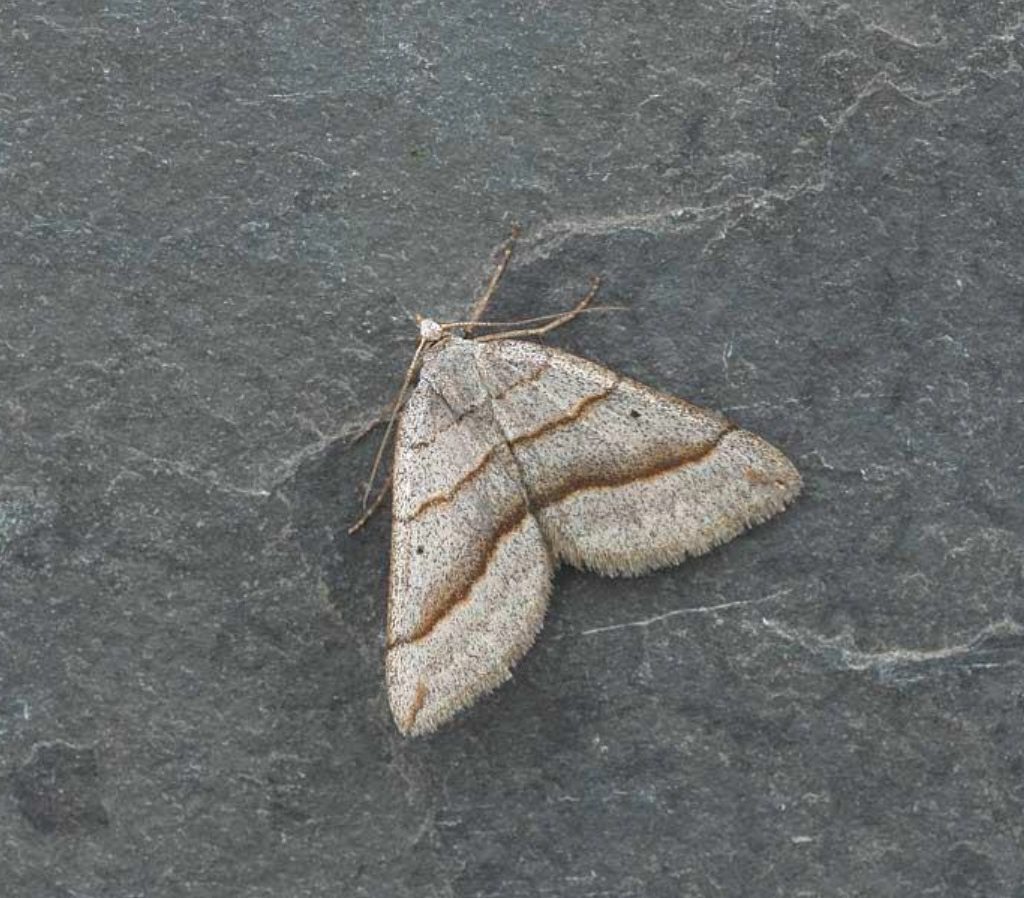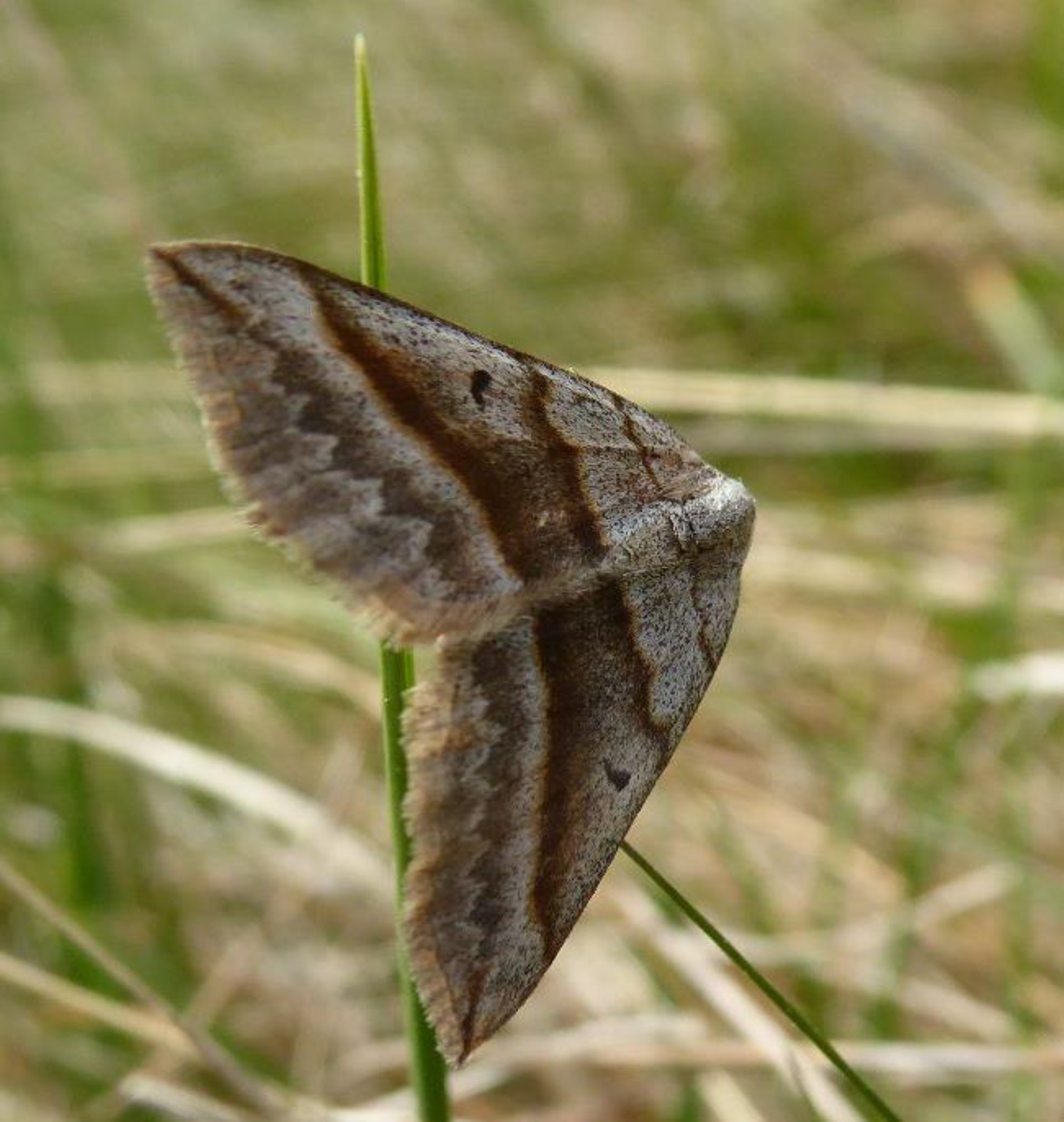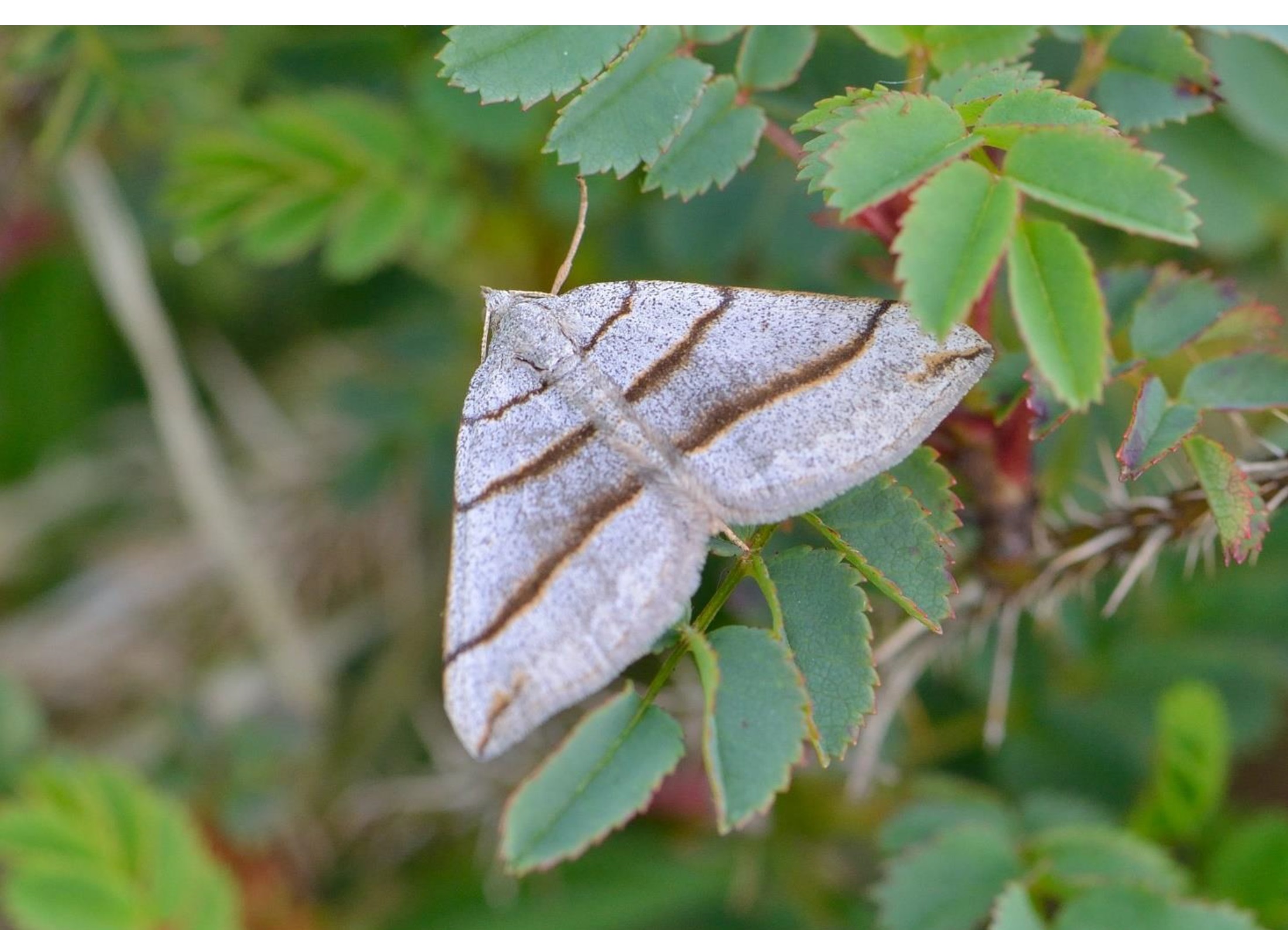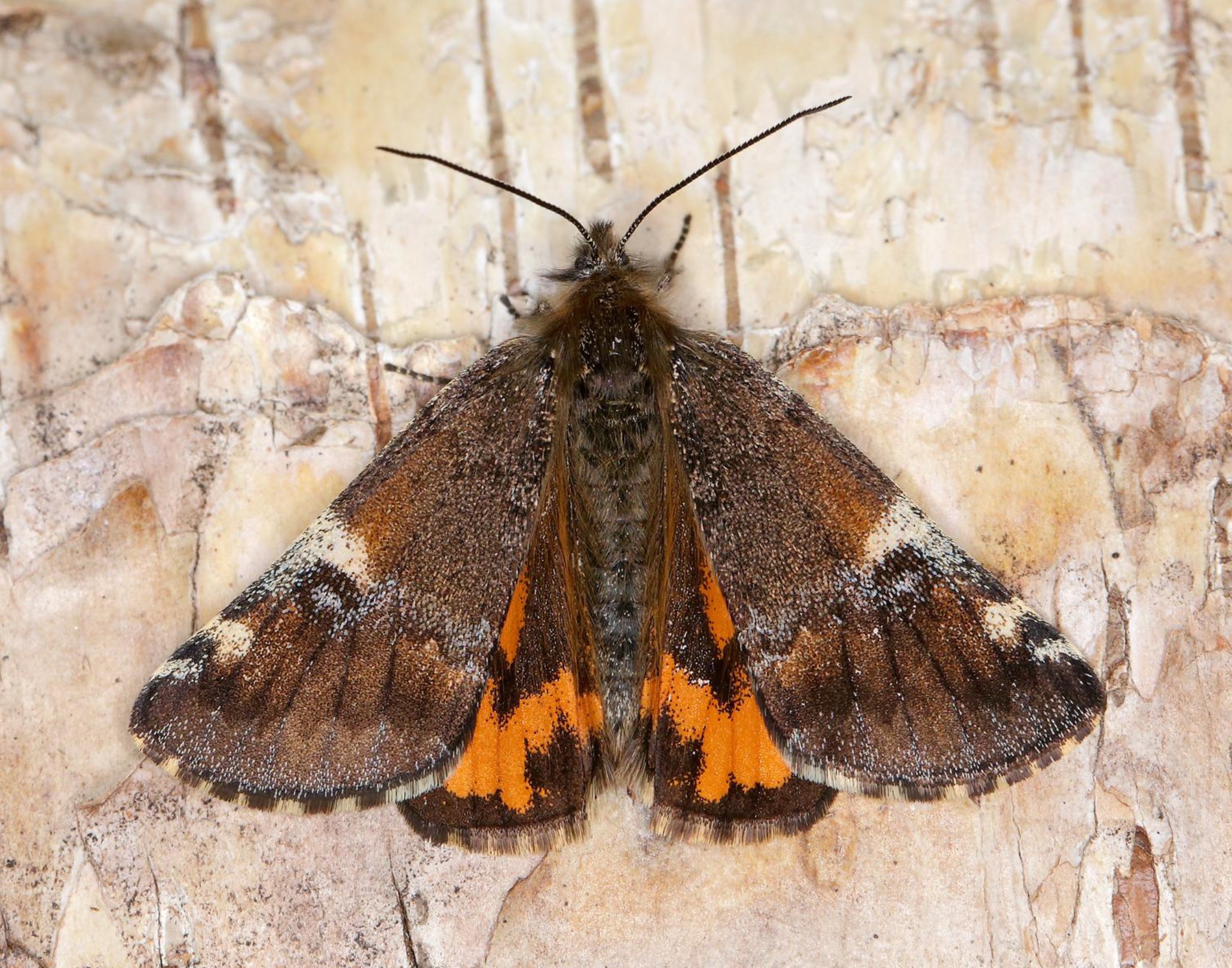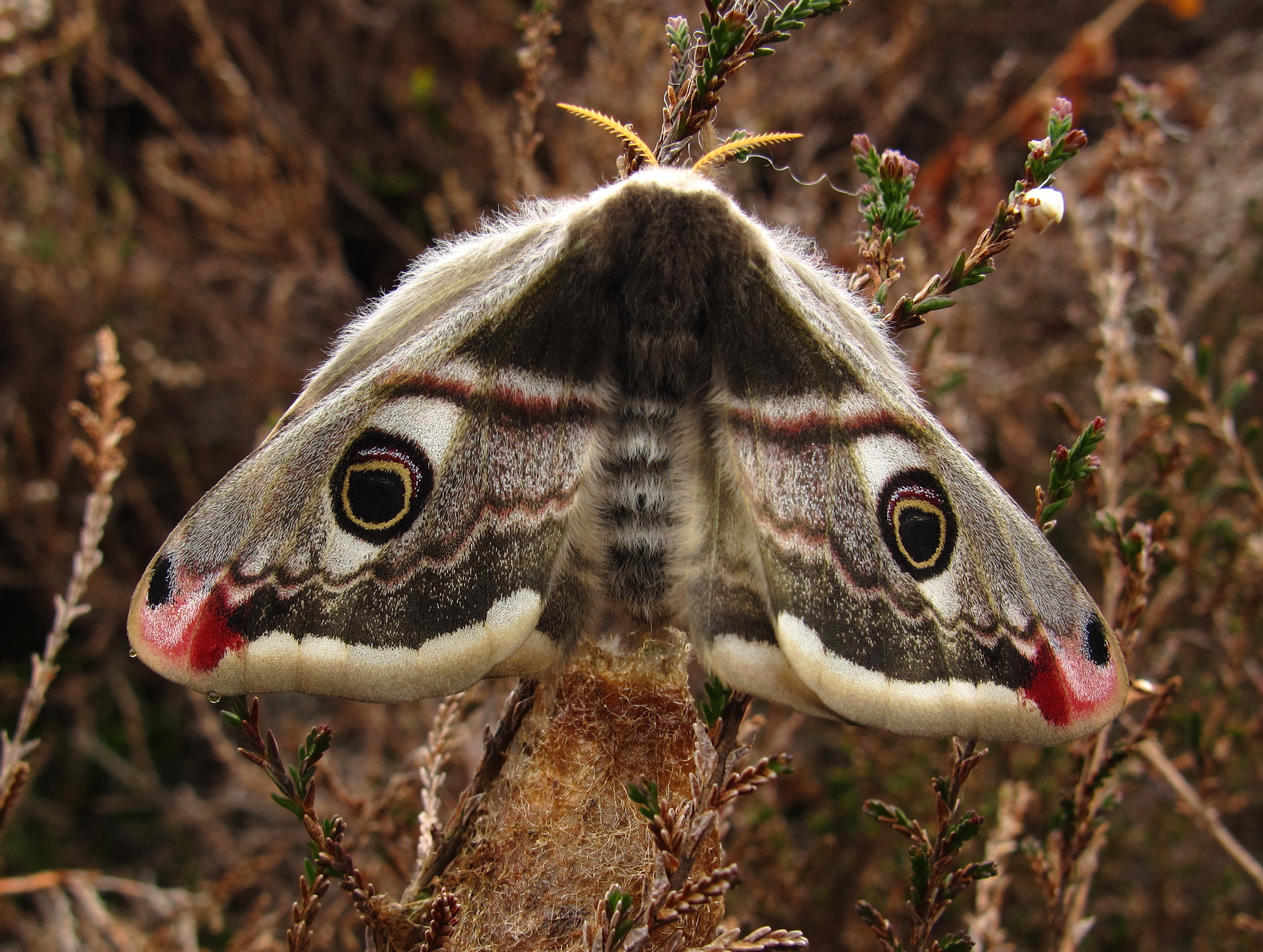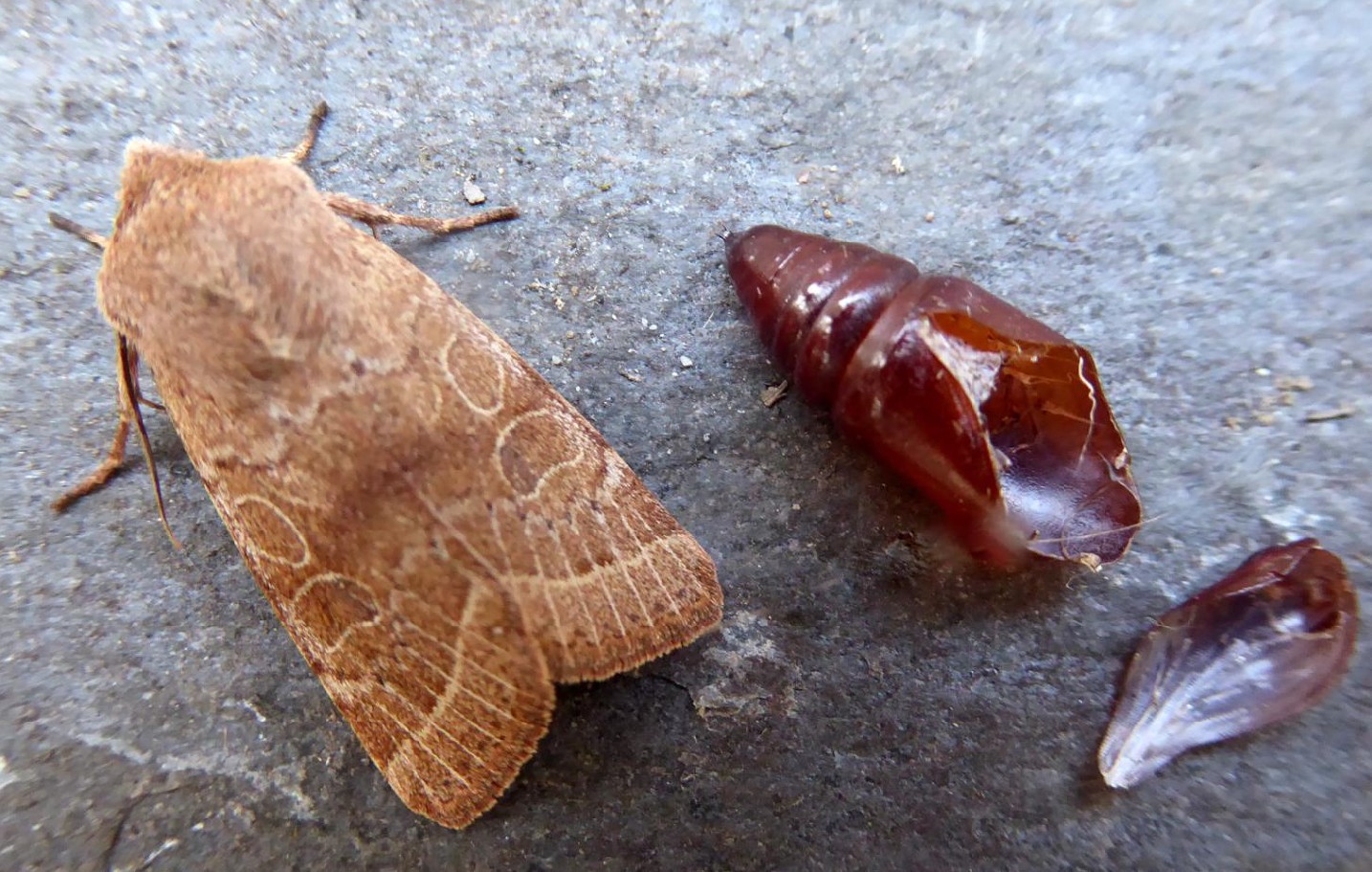The Lead Bell is a mysterious species in D&G! We only have eight records since 1942 of which a single one, actually of five male specimens, has been confirmed as a Lead Bell and this was through microscopic examination of the genitalia. There are no existing photographs and only the five museum specimens. All other ‘Belle’ moths from D&G have been identified as July Belles with 126 records, dating from 1862 even though the four oldest records were before 1930 when the July Belle was first recognised as a species that occurred in Britain.
The problem is that these two species are very closely related and there is sufficient variation in the wing patterns and colour to make it difficult to be certain which species you have. The Lead Belle is the less common and, in Britain, is restricted to south-west England, Wales, Cumbria and, in Scotland, the north-east.
Typically the moth is as shown below, that is it has dark grey wings with two, heavily shaded, cross bands which are relatively close together. Halfway between the bands is a comma shaped black dot and the saw-toothed marginal line is bold and distinct. The forewing is narrower and has a slightly hooked tip compared with the July Belle. Also relevant is that the female Lead Belle is noticeably smaller than the male.
The caterpillar is a typical, long looper pale brown above and paler beneath with a scattering of black speckles and a dashed mid-line. The larva feeds on Petty-whin, Gorse and Broom and, in north-east Scotland, it is a moth of inland acid, heather moorland and not found along the coast. The adult sometimes flies by day and is easily disturbed from the vegetation although it also comes to light. There is some evidence that the Lead Belle emerges early from mid-May although there are records right through to early August.
The July Belle is a paler moth as shown below, with broader, rounded tipped wings which have a wider band across them with less pronounced cross bands. Towards the first main cross-vein the ‘dot’ is small and round and the sub-marginal saw-toothed markings are feint. The female is the same size as the male.
The July Belle caterpillar cannot be distinguished from that of the Lead Belle and feeds on the same foodplants. It is thought that its special habitat maybe grassland with stunted gorse as is found along much of our coast. However little detailed work has been done to clarify either species’ requirements. There are records of this moth at the end of May but the majority are, as the name suggests, from mid-July. It too can fly by day and comes to light.
Obviously there is little that can be done to clarify the old or very old records where there are no known photographs or specimens. It is, however, important that we try and work out which species is found in D&G and where. Photographs are clearly very important and it would be invaluable to have all sighting backed up by clear shots of the adults. However, like other pairs of very closely related species we do need to take the occasional sample to prove which species we have. There are documented difference in both the male and the female genitalia and a good preparation will provide the evidence we need. One or two well marked, suspected Lead Belles would be ideal and will make no difference to the populations. The photos below compare the July Belle against the Lead Belle.
It would be very interesting as well as constructive to have lots of photographs of this relatively widespread species pair, with an emphasis on well-marked ‘potential Lead Belles’ and especially on records away from the coast.

